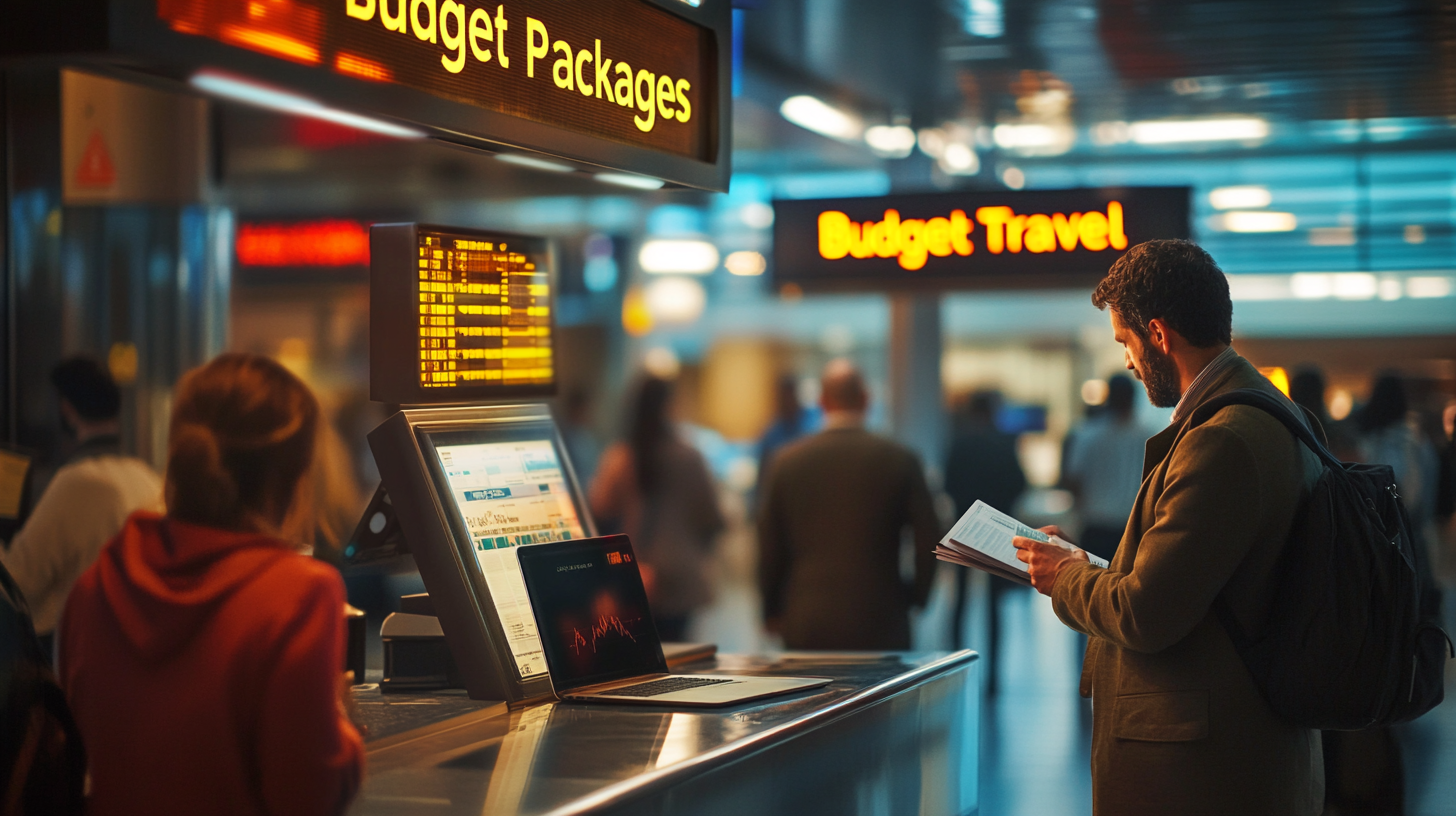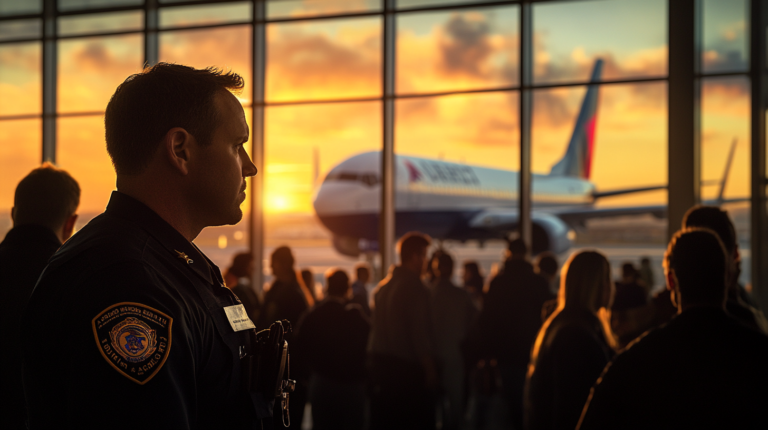Mastering Your Business Travel Budget: Strategies for Efficient Expense Management

In today’s dynamic business landscape, where opportunities span across continents and time zones, business travel has become more than just a luxury—it’s a necessity. Companies are increasingly sending employees across the globe to secure deals, attend conferences, and foster relationships that drive growth and innovation. However, amidst the benefits of face-to-face interactions and global outreach, the costs associated with business trips can mount rapidly. Flights, accommodations, meals, and incidental expenses can strain even the most generous budgets if not meticulously managed.
Understanding how to effectively plan, track, and optimize your business travel budget is crucial for ensuring that these expenditures not only stay within set limits but also deliver tangible value to the organization’s bottom line. By adopting strategic approaches to expense management, businesses can transform travel from a cost center into a catalyst for success.
Understanding Business Travel Expenses

Business travel expenses encompass the ordinary and necessary costs incurred when an employee or self-employed individual travels away from their tax home for work purposes. The Internal Revenue Service (IRS) stipulates that for these expenses to be deductible, they must be directly related to the conduct of business and should not be extravagant or personal in nature. Understanding these definitions is essential for proper expense management and compliance. Your tax home is generally defined as the entire city or general area where your primary place of business or work is located, regardless of where you maintain your family home.
Key deductible expenses include:
- Transportation: Costs of getting to and from your business destination, including airfare, train tickets, bus fares, and car rentals. For instance, if you fly from New York to San Francisco for a conference, the cost of your flight is a deductible expense. Additionally, expenses for taxis or rideshares between the airport and your hotel or meetings are also deductible.
- Lodging: Hotel stays or other accommodations necessary for your trip. This includes the cost of the room, as well as any business-related services charged to your room, such as fax or concierge services. Selecting reasonable accommodations that meet business needs without being overly luxurious is important for both cost control and tax compliance.
- Meals: Food expenses incurred while traveling. Typically, you can deduct 50% of the cost of meals. The IRS provides standard meal allowances (per diem rates) which can simplify the process of calculating these deductions. For example, if you take a client out to dinner to discuss business, 50% of that meal cost is deductible.
- Communication: Business-related communication expenses such as phone calls, fax charges, and internet access fees. If you need to make long-distance calls back to the office or pay for Wi-Fi access to conduct business activities, these costs are considered deductible.
It’s important to note that expenses for personal companions, such as a spouse or family member traveling with you, are not deductible unless they are also an employee traveling for a bona fide business purpose. Additionally, costs related to personal entertainment, sightseeing, or other non-business activities are not deductible. If combining business and personal travel, only the expenses directly related to the business portion are eligible for deduction. Furthermore, travel for assignments expected to last over a year at a single location is generally not considered temporary, and as such, the associated travel expenses are not deductible. For detailed guidance on what qualifies as deductible, you might find A Comprehensive Guide to Business Travel Deductions useful.
The Importance of Accurate Record-Keeping

Maintaining detailed and accurate records of all travel expenses is vital for several reasons. Firstly, it ensures compliance with IRS regulations, reducing the risk of audits or penalties. Secondly, thorough record-keeping maximizes potential tax deductions, allowing businesses to reclaim as much of their expenditure as legally permissible. Lastly, it provides valuable insights into spending patterns, enabling better budgeting and cost management in the future. Here are key steps to effective record-keeping:
- Tracking and Estimating Costs: Develop a system for collecting and organizing receipts, invoices, and expense reports. Use expense tracking forms or digital apps to log expenses immediately as they occur. This could involve snapping photos of receipts or forwarding electronic confirmations to a central repository. For example, using an app that integrates with credit cards can automate much of this process.
- Understanding Tax-Deductible Expenses: Invest time in familiarizing yourself or your finance team with IRS guidelines to clearly identify which expenses qualify. Knowing the nuances, such as the 50% limitation on meal deductions or the conditions under which entertainment expenses may be deductible, can prevent costly mistakes.
- Using Technology for Reporting: Implement expense management software to streamline the reporting process. Such tools can automate data entry, categorize expenses, and generate reports that align with accounting systems. This not only saves time but also enhances accuracy. For instance, integrating Advanced Corporate Expense Management Solutions can revolutionize the way expenses are handled.
Regular internal audits and the use of analytics tools can further assist in identifying spending patterns and areas where cost-saving measures can be implemented. By analyzing data over time, businesses can negotiate better rates with vendors, adjust travel policies, and forecast future expenses more accurately.
Planning and Managing Your Travel Budget

Effective planning is the cornerstone of maintaining an affordable and efficient travel budget. By proactively strategizing travel arrangements, businesses can significantly reduce costs while ensuring that travel objectives are met. This involves setting clear goals for each trip, estimating potential expenses accurately, and aligning costs with the expected return on investment. Such meticulous planning ensures that every trip undertaken contributes positively to the company’s goals and justifies the expenditure.
Utilizing Budgeting Tools

Leveraging the right tools can make budgeting more precise and less time-consuming. A customizable Excel budget template, for instance, can be an invaluable asset for tracking and managing travel expenses. These templates often come with built-in formulas and auto-calculation features that help prevent budget overruns. They can be tailored to include specific expense categories, per diem rates, and can even project expenses based on historical data. By using these templates, businesses ensure that reimbursements align with actual costs, enhancing transparency and accountability. For those seeking more advanced solutions, Comprehensive Travel Budgeting Software for Businesses offers features like multi-currency support, integration with accounting systems, and real-time expense tracking.
Implementing Travel Policies and Software

Establishing clear and comprehensive travel policies is essential for setting expectations and providing guidelines for employees. Such policies should outline allowable expenses, spending limits, preferred vendors, and procedures for booking and reimbursement. They serve as a framework that helps employees make cost-effective decisions while on the road. Moreover, implementing travel expense management software enhances adherence to these policies. Solutions like Fyle simplify receipt submission by allowing employees to capture expenses on-the-go through mobile apps. The software automates reconciliation by matching expenses with corporate policies, flagging any discrepancies, and reducing the administrative burden on finance teams.
Additionally, tools like TravelBank offer real-time data insights and adjust budgets based on current market rates. This dynamic budgeting approach allows companies to be flexible and responsive to changing conditions, such as seasonal price fluctuations or sudden market shifts. By integrating such technology, organizations can achieve greater efficiency and cost savings in their travel programs. Exploring Innovative Travel Management Platforms for Modern Businesses can provide further options tailored to specific organizational needs.
Budget Allocation Strategies

Understanding how to allocate funds within your travel budget is essential for effective financial management. By breaking down the budget into specific categories, businesses can monitor spending, identify areas for cost reduction, and ensure that funds are being used efficiently. Key expense categories often include:
- Meals: Usually accounting for about 20% of the total travel budget. Implementing per diem rates or meal allowances helps control costs and simplifies reimbursement processes. For example, setting a standard daily meal rate based on the destination’s cost of living ensures fairness and predictability.
- Airfare: Often one of the most significant expenses, especially for international travel. Booking flights well in advance, opting for economy class, utilizing company-negotiated rates, and leveraging travel rewards or frequent flyer programs can lead to substantial savings. Additionally, being flexible with travel dates can help secure lower fares.
- Accommodation: Costs can vary widely depending on location, duration of stay, and the type of lodging. Negotiating corporate rates with hotel chains or partnering with preferred accommodation providers can reduce expenses. Participating in loyalty programs may also yield benefits such as complimentary upgrades or free nights.
- Ground Transportation: Includes car rentals, taxis, rideshares, or public transportation while at the destination. Encouraging the use of cost-effective options, such as public transit passes or carpooling, can minimize this expense.
- Incidental Expenses: Miscellaneous costs such as parking fees, tolls, and tips. While individually small, these can add up and should be accounted for in the budget.
Budgeting Methods

Choosing the appropriate budgeting method is crucial for aligning travel spending with organizational goals and financial constraints. There are two primary budgeting methods:
- Hard Cap Budgeting: Setting a strict limit on expenses for each trip or traveler. This method provides clear boundaries and is straightforward to implement. However, it can be inflexible, potentially hindering necessary travel activities if costs exceed the cap due to unforeseen circumstances. For instance, if flight prices surge unexpectedly, adhering to a hard cap might require rescheduling or canceling the trip.
- Dynamic Budgeting: Allows for adjustments based on real-time factors such as market rates, seasonal fluctuations, and individual trip requirements. This approach is more adaptable, accommodating the nuances of each travel situation. It involves setting baseline budgets but permits reasonable deviations when justified. For example, if attending a crucial last-minute meeting necessitates higher-than-usual expenses, dynamic budgeting can accommodate this need.
Ultimately, the choice between these methods depends on the organization’s priorities, culture, and financial flexibility. Some companies may adopt a hybrid approach, combining elements of both. Utilizing Best Practices for Corporate Travel Budgeting can offer further insights into selecting and implementing the most suitable budgeting strategy.
Tax Compliance and Deductions

Maximizing tax deductions associated with business travel requires a thorough understanding of IRS regulations and diligent adherence to record-keeping requirements. The IRS provides detailed guidelines on what constitutes deductible travel expenses, ensuring that businesses can legitimately reduce their taxable income while remaining compliant. IRS Tax Tip 2023-15 offers valuable insights into claiming business travel expense deductions, particularly relevant when employees travel away from their tax home and stay overnight for work purposes.
Key points include:
- Necessity and Business Connection: Travel expenses must be ordinary (common and accepted in your trade or business) and necessary (helpful and appropriate for your business). They should be directly related to active conduct of business. For example, traveling to meet a client or attend a trade show where you will solicit new business is considered necessary.
- Duration of Assignment: Employers can deduct expenses for temporary assignments expected to last less than one year. If an assignment is indefinite or expected to exceed one year, it is considered permanent, and travel expenses are not deductible.
- Conventions and Conferences: Deductions for attending conventions, seminars, or conferences are allowed if they benefit the business by providing education, networking, or other advantages. Special rules apply for those held outside North America, requiring proof that it is as reasonable for the meeting to be held outside the North American area as within it.
- Military Reservists: Military reservists can deduct travel expenses for overnight travel more than 100 miles away from their home, related to their reserve duties. These deductions are an adjustment to gross income and can be claimed even if the taxpayer does not itemize deductions.
It is crucial to differentiate between expenses that are fully deductible, partially deductible, and non-deductible. Consulting IRS publications such as Publication 463 (Travel, Entertainment, Gift, and Car Expenses) can provide detailed guidance. Furthermore, seeking advice from tax professionals, such as Certified Public Accountants (CPAs) or IRS Enrolled Agents, can ensure compliance and optimization of deductions. Utilizing resources like Expert Tax Strategies for Business Travelers can also offer practical tips for navigating complex tax rules.
Expert Insights

Gaining insights from experts can deepen understanding and provide practical applications of tax laws. Justin, an IRS Enrolled Agent and attorney with extensive experience in tax law, emphasizes the critical importance of the business purpose behind travel expenses. He asserts that for travel expenses to be deductible, the trip must be primarily for business activities, such as attending conferences, meeting clients, or visiting worksites. Personal vacations or trips where business is incidental do not qualify. Justin explains, “The travel must be ordinary and necessary to your trade or business, meaning it is common, accepted, helpful, and appropriate. Expenses that are lavish or extravagant under the circumstances, or that are for personal purposes, are not deductible.”
Understanding the concept of a tax home is also pivotal. Justin notes that your tax home is generally the location of your main place of business or work, regardless of where your family home is located. The relevance of the tax home comes into play when determining whether travel is temporary or indefinite. For assignments expected to last over a year, travel expenses are generally not deductible because the assignment is considered indefinite, and thus, your tax home shifts to the new location. He advises, “Careful planning and documentation are essential, especially for long-term assignments. Ensure that you clearly establish the temporary nature of your work elsewhere to substantiate deductions.”
For more expert guidance, exploring Interviews with Tax Professionals on Business Travel Expenses can provide additional perspectives and tips on managing travel-related tax matters.
Leveraging Technology for Efficiency

In today’s digital age, leveraging technology is not just advantageous—it’s essential for efficiency and competitiveness. Incorporating advanced tools and software solutions can significantly streamline expense management, transforming how businesses handle travel budgets. Utilizing specialized software for tracking and reporting expenses enhances accuracy by minimizing manual data entry and the potential for human error. It also accelerates the reimbursement process and ensures compliance with company policies and tax regulations. Employees can submit expenses on-the-go using mobile apps, while finance teams gain access to centralized data for analysis.
Automated processes provide real-time insights into spending patterns, enabling businesses to monitor travel expenses as they occur rather than weeks or months later. This immediacy facilitates better decision-making, allowing managers to address budget overruns promptly or adjust allocations as needed. Additionally, integrating expense management systems with accounting software streamlines financial reporting and audit preparation. For example, implementing Cutting-Edge Expense Automation Tools can revolutionize expense workflows, freeing up valuable time that can be redirected towards core business activities and strategic planning.
Technology also offers opportunities for cost savings through features like automated policy enforcement, vendor management, and data analytics. By embracing digital solutions, businesses position themselves to manage travel expenses more effectively, reduce administrative burdens, and gain a competitive edge.
Final Thoughts
Effectively managing a business travel budget is a multifaceted endeavor that demands strategic planning, meticulous record-keeping, and continuous education on tax laws and industry best practices. By implementing clear travel policies, leveraging cutting-edge technology, and staying informed about IRS guidelines, businesses and individuals can transform travel expenses from a potential liability into a strategic asset that supports growth and profitability.
Ultimately, the key to successful travel expense management lies in balancing cost control with the operational needs of the business. This balance ensures that every journey undertaken is both efficient and advantageous, contributing to the organization’s objectives without compromising financial stability. By approaching travel budgeting proactively and holistically, businesses can reap the benefits of global opportunities while maintaining fiscal responsibility.
Follow us back to Seat 5A for more insights and strategies on optimizing travel budgets.
This blog post was AI-written / human assisted.






